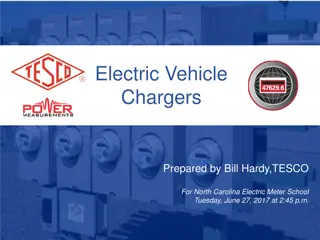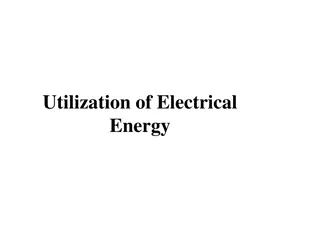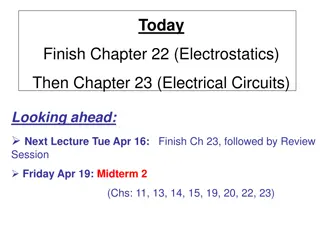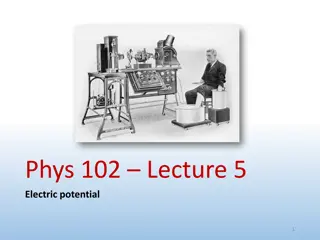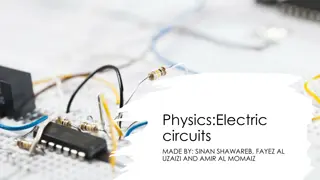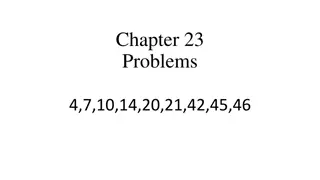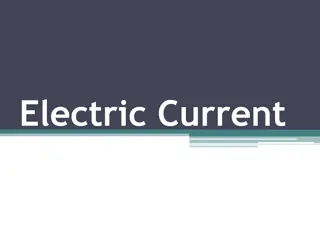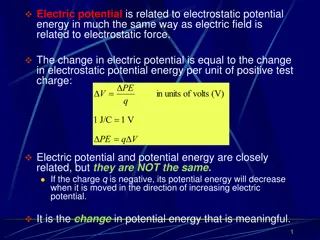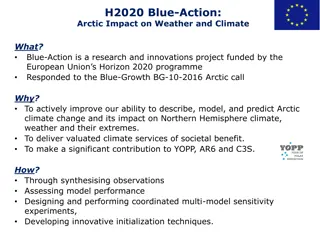Overview of New York State Electric System Climate Action Council
The New York State Electric System Climate Action Council, as of October 8, 2020, oversees the bulk and distribution systems, rate case processes, utility operating revenues, residential electric bills, and statewide reliability metrics. The bulk system encompasses the NYISO-administered market for large facilities, while the distribution system involves local transmission and distribution managed by regulated utilities. Rate cases play a crucial role in setting utility expenditure levels and balancing investments for system reliability and consumer rates. The presentation also highlights typical residential electric bills and statewide reliability metrics.
Download Presentation

Please find below an Image/Link to download the presentation.
The content on the website is provided AS IS for your information and personal use only. It may not be sold, licensed, or shared on other websites without obtaining consent from the author. Download presentation by click this link. If you encounter any issues during the download, it is possible that the publisher has removed the file from their server.
E N D
Presentation Transcript
NYS Electric System Climate Action Council October 8, 2020
2 Bulk vs Distribution System BULK SYSTEM Generation: NYISO administers market for large facilities (typically > 5 MW) Independent competitive generators NYISO operates competitive electric wholesale markets Bulk Transmission: NYISO administers planning for the Bulk Power Transmission System (generally 230 kV and above) FERC sets rates for bulk system investments NYS transmission facilities primarily owned by NYS utilities, along with independent developers DISTRIBUTION SYSTEM Local transmission and distribution carried out by regulated utilities, PSC as regulator PSC approves funding of local transmission and distribution investments Duty to ensure reliability at just and reasonable rates Retail activities: Carried out by utilities as well as independent energy service companies
3 Rate Case Process Primary mechanism for establishing utility capital and operating expenditure levels Public window for guiding utility expenditures Opportunity to receive comments on the implementation of the State priorities Expert testimony provided by staff and interested parties; Commission decision based on full record though settlement or hearings Balance between investments for system reliability, implementation of state programs and rate impacts to consumers NYS Electric Utility Operating Revenues ($000) $ $ $ $ $ $ $ $ 529,240 8,086,284 2,614,978 1,239,136 480,601 3,604,153 603,886 17,158,279 Central Hudson Con Edison National Grid NYSEG Orange & Rockland PSEG-LI RG&E Total
4 Typical 2019 Residential Monthly Electric Bills Note: Bill Assistance: 927,000 Customers, $237 Million $150.00 2% 4% 4% 30% 4% $100.00 46% 36% 32% 6% 10% 6% 6% 28% 32% 30% 40% $50.00 68% 60% 64% 50% 66% 62% 60% 54% $- Central Hudson Con Edison NYC Con Edison Westchester NMPC NYSEG O&R PSEG-LI RG&E Delivery Supply Surcharges Notes: All bills are at 600 kWh per month except Con Edison NYC which is at 300 kWh For upstate companies taxes represent approximately 15% of the total monthly bill For Con Edison taxes represent approximately 25% of the total monthly bill
5 Recent Statewide Reliability Metrics Statewide Five Year Frequency History (Excluding Major Storms) 1.20 1.00 Frequency (All Utilities) 0.80 Frequency Frequency (Without Con Ed) 0.60 Average (All Utilities) 0.40 Average (Without ConEd) 0.20 0.00 2015 2016 2017 Year 2018 2019 Note: Con Edison Has Significant Underground Facilities
6 Integration of New Resources Goal: Integrate Reliably and Cost-effectively Non-wires Alternatives Utilities applying NWA suitability criteria to capital plans to identify potential NWAs Currently over 40 NWAs are being pursued or under consideration Distributed Energy Resources Solar target - 6000 MW by 2025 Over 2400 MW installed Approximately 4700 MW in utility queues DPS staff ombudsman and interconnection working groups Access to compensation through both retail compensation and NYISO markets
7 Integration of New Resources (continued) Storage Target: 1500 MW by 2025; 3000 MWs by 2030 936 MW operational/awarded, all programs Approximately 1200 MW in utility queues Utilities also pursuing storage projects through rate cases or PSC proceedings Use cases: Customer sided Distribution system Bulk system
8 Integration of New Resources (continued) Beneficial Electrification Electric Vehicles PSC Make-Ready Order Provides for utility funding of EV charging station through 2025 Sized to meet the NYS ZEV goal Locational/System considerations Building Electrification PSC Order Established targets and budgets for heat pumps $454 million in funding to achieve 3.6 TBtu
9 Integration of New Resources - NYS Electric System Planning Accelerated Renewable Energy Growth Act PSC to establish State transmission and distribution plans to meet CLCPA goals System studies needed to inform the Plan are underway 100x40, Offshore Wind, Utility Local T&D Initial results will be available by end of December In early 2021, PSC will: Identify bulk level and local T&D investments and needs Bulk projects may be implemented through the NYISO process or other mechanisms Establish guidelines for integrating CLCPA goals in utility planning processes PSC will revisit the plan and progress toward CLCPA goals by January 1, 2023 and every 4 years thereafter












